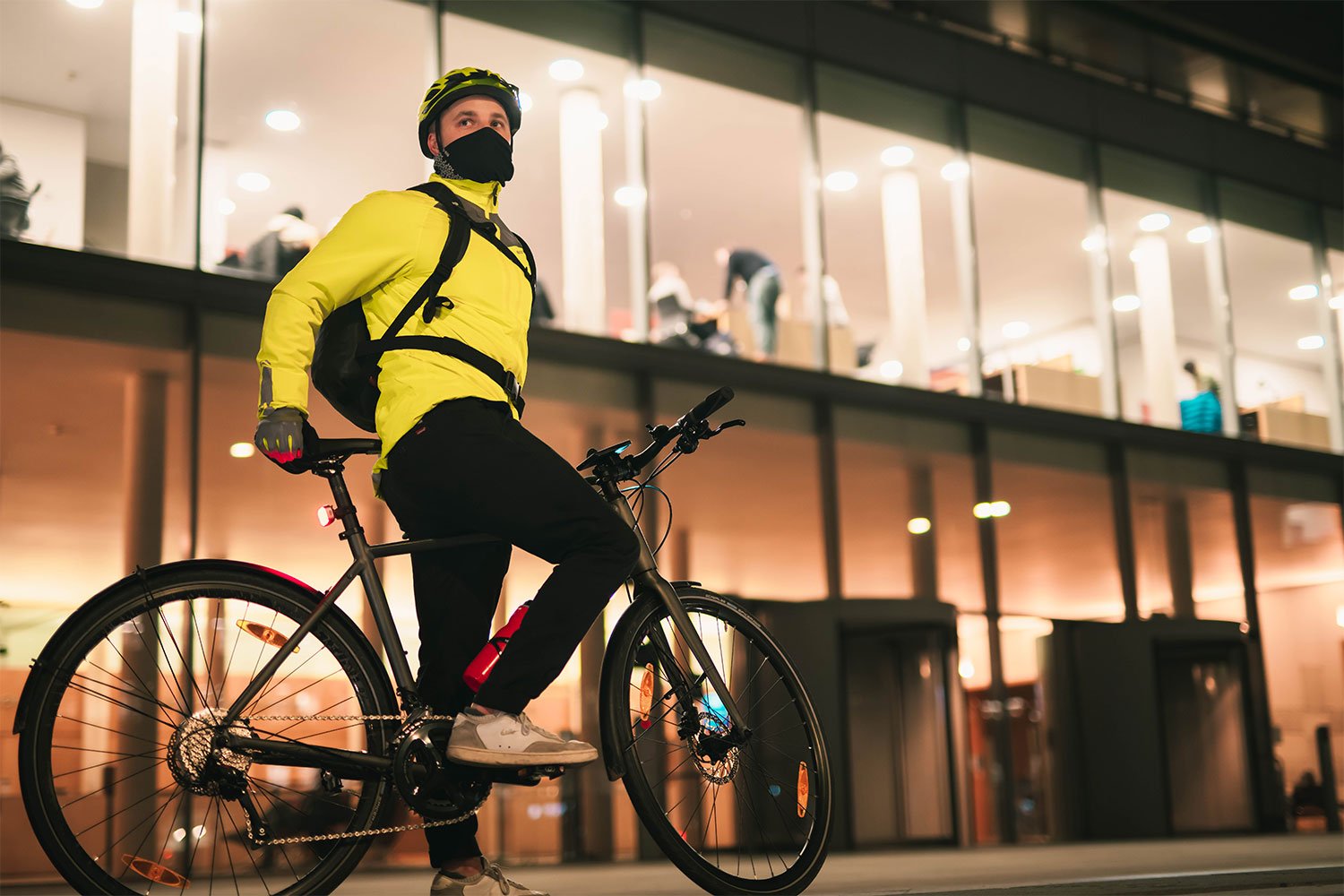
What to wear on a bike in Winter?
For some, the thought of cycling in Winter is massively unappealing. Cold weather, mucky lanes and a higher chance of rain or more. However, cycling through the coldest months can be just as fun as in Summer as long as you take a bit of extra care and dress appropriately for the conditions. It ensures comfort, safety, and enjoyment during your winter bike rides. In this article, we’ll explore essential clothing and gear you need to stay warm so you know what to wear on a bike in Winter.
Get Layered
Layering up is the most important part of staying warm and comfortable in Winter. It’s the same principal walkers and runners employ. Layering allows you to regulate your body temperature by adding or removing layers as needed. Start with a moisture-wicking base layer to keep sweat away from your skin. Merino wool or synthetic materials are excellent choices for base layers, as they provide insulation even when wet.
On top of the base layer, add an insulating layer to trap heat. Fleece or thermal jerseys are great options to keep you warm without adding bulk. Finally, finish with a windproof and/or waterproof outer layer to protect against the elements.
You can buy cycling-specific clothing but base layers and jackets you may already have for walking and running will work just fine too.
TIP: January is bargain time for outdoor gear. All the big outdoor retailers have big sales on right now with massive discounts available on key items like base layers, thermal tops and jackets.
Insulation
If you want to invest in your riding this Winter, spending money on a high-quality insulated cycling jacket designed for winter conditions will be money well spent. Cycling jackets are cut specifically to ensure freedom of movement when in a cycling position and often have rear pockets and a longer tail to help keep your behind clean and dry if you don’t have guards. Look for features such as wind resistance, water repellence, and particularly breathability. The jacket should provide warmth without restricting your movements, allowing for a comfortable and efficient ride.
TIP: Generally the more you pay the better quality the jacket will be. Lighter, technical fabrics with better breathability. If you buy cheap, expect to boil in your bag.
- Cold Weather Battery Care
- How to Clean an Electric Bike
- Top 10 Health Benefits of riding an Electric Bike
Function not Fashion
What do you wear on a bike to keep your lower body warm? Thermal cycling tights or trousers are designed to provide insulation while allowing for freedom of movement. Look for options with windproof and water-resistant properties to shield against the cold and wet conditions. Tights are not a look everyone wants but they are better than trousers because of the freedom of movement on the bike they allow and the heat they trap close to the skin.
TIP: Wearing tights under a pair of baggy shorts or ¾ is a popular option with MTBers if you don’t want people to see your bum in tights!
Protect your bits
The second most important part of staying warm while cycling in Winter is to protect your extremities. If your hands, feet or head get cold, your ride will quickly become quite an unpleasant experience.
Hands
Covering your hands in winter is a must when it’s cold. Your hands will quickly freeze, your fingers will become numb and painful and your ability to brake and ride safely will be compromised.
There is a wide range of gloves available to wear on a bike. Thicker, heavier, more expensive gloves tend to be for the coldest temperatures.
Fit is important too. A glove that is too big will be too sloppy on your hands and will rub and chafe. A glove too tight will restrict your ability to brake and may even make your hands cold too because it restricts the blood supply to your fingers.
TIP: Being a contact point and where you steer and brake, having warm hands is probably more important than you realise for your safety. Make sure they are!

Feet
Toasty feet in Winter is a must for comfort. First up because it won’t cost you anything, layer up your feet and wear an extra pair of socks. If you want to invest some money you can buy thermal or waterproof socks (which you can double up too!) or if you wear cycling shoes, you can buy shoe covers relatively cheaply too which are neoprene boots you wear over your shoes. These are quite effective.
If money is no object you can buy specific winter boots for cycling which almost guarantee warm feet whatever the weather, but these can be eye-wateringly expensive.
TIP: I use winter boots + thermal socks and never had cold feet riding in Winter for over 10 years. They are expensive though at £200+ a pair like top-quality walking boots would be.

Head
It’s a known fact a lot of heat is lost through the head. So no head protection from the cold can be uncomfortable not withstanding possible windchill on your ears too.
Wearing a helmet can make wearing a big, woolly bobble hat difficult and we wouldn’t ever say wear a woolly hat instead. Always wear a helmet in Winter but to keep your head warm where a very thin beanie-style cap or skull cap. These won’t compromise your helmet fit.
To keep your ears warm you could wear a wide headband or a deeper fitting hat or buff-style tubular piece of fabric which are very popular now too.
TIP: A buff is one of cheapest , most versatile pieces of clothing you can wear in winter. They can be a bandana, a skull cap + ear warmer or wear one around your neck for more insulation and pull it up over your face in really cold conditions. I own about 10 of them!
(c) artofyoursuccess.comEye Eye
You might not think wearing eye protection is necessary in Winter but it is important. Cold wind can make your eyes water and riding behind others can result in debris been flicked up towards your face even if your buddies have rear guards on. Basic eye protection is cheap or you could go more expensive and incorporate sunglasses with replaceable lenses for the low sun you may experience in Winter too.
TIP: It’s common for glasses to steam up in Winter when you stop at a junction, for example, which will impair your vision until you get back up to speed. An anti-fog lens treatment can help. Simply spray on, rub in and let it dry.

Conclusion
Cycling in winter can be a rewarding experience with the right clothing and gear. Prioritise comfort, warmth, and safety. Layer effectively, choose windproof and water-resistant materials, and don’t forget essential accessories like gloves, shoe covers, and eye protection. Knowing what to wear on a bike, you can enjoy the beauty of cycling in Winter while staying warm and toasty.
BONUS: Did you know you can buy clothing and accessories only on Cycle to Work? You could save upto 50% on RRP.
